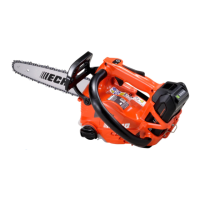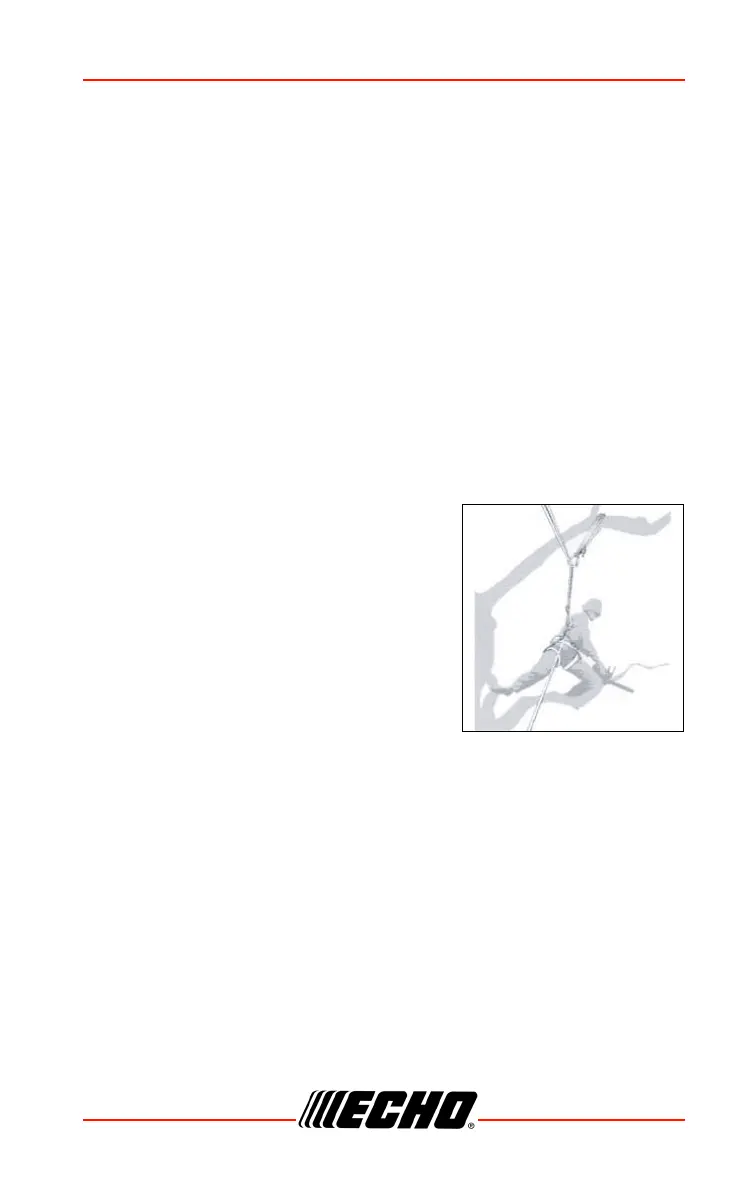DCS-2500T OPERATION
X7508220200 41
© 10/21 ECHO Incorporated
• a lack of control of the saw such that it is more likely to come into contact
with climbing lines and the operator's body (particularly the left hand and
arm), and
• loss of control owing to an insecure work position and resulting in contact
with the saw (unexpected movement during operation of the saw).
1. Securing the work position for two-handed use
In order to allow the saw to be held with both hands, as a general rule
operators should aim for a secure work position in which they operate the
saw at:
• hip level, when cutting horizontal sections, and
• solar plexus level, when cutting vertical sections.
Example of redirection of the main line via supplementary anchor
point:
Where the operator is working close into
vertical stems with low lateral forces on the
work position, then a good footing could be
all that is needed to maintain a secure work
position. However, as operators move away
from the stem, they will need to take steps to
remove or counteract the increasing lateral
forces by, for example, a redirect of the main
line via a supplementary anchor point or
using an adjustable strop direct from the
harness to a supplementary anchor point.
2. One-hand use of the chainsaw
Operators should not use tree service chainsaws one-handed when work
position is unstable or in preference to a handsaw when cutting small
diameter wood at the branch tips. Tree service chainsaws should only be
used one-handed where:
• operators cannot gain a work position enabling two-handed use, and
• they need to support their working position with one hand, and
• the saw is being used at full stretch, at right angles to and out of line with
the operator's body.
Example of on-handed chainsaw use:

